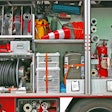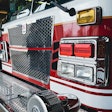
The Department of Labor’s Occupational Safety and Health Administration (OSHA) is taking steps to address the dangers of workplace heat exposure. On April 24, 2024, OSHA presented an initial regulatory framework for a proposed rule aimed at protecting U.S. workers in both outdoor and indoor settings from heat-related hazards. This announcement was made during a meeting with the Advisory Committee on Construction Safety and Health, which unanimously supported advancing the rulemaking process.
Assistant Secretary for Occupational Safety and Health, Doug Parker, emphasized the urgency of the new regulations. "Workers at risk of heat illness need robust protections. OSHA is aggressively developing a regulation to safeguard workers from heat hazards," he stated.
The proposed rule seeks to reduce the substantial health risks associated with heat exposure, an issue that has grown more pressing with record-breaking temperatures nationwide. Historically, heat exposure has led to numerous worker deaths and thousands of illnesses annually—most of which are preventable.
As part of its ongoing efforts, OSHA will continue to utilize its existing outreach and enforcement resources to educate employers and workers and to hold businesses accountable for non-compliance with existing safety standards. The agency is actively conducting inspections under its National Emphasis Program – Outdoor and Indoor Heat-Related Hazards, which was launched in 2022. Nearly 5,000 federal heat-related inspections have been carried out since the program's inception.
The focus is also on programmed inspections in sectors like agriculture, particularly involving H-2A workers who are highly vulnerable due to factors such as language barriers and lack of acclimatization. By law, employers are required to provide necessary protections like adequate water, rest breaks, and shade or cool rest areas, especially for new or returning workers who need to acclimatize to high temperatures.
"No worker should have to get sick or die because their employer refused to provide essential protections against high heat," Parker added.
OSHA is calling for input from a wide array of stakeholders and the public as it moves to propose and finalize the rule. The agency also continues to coordinate with states that have their own occupational safety and health programs and is engaging with employer associations, workers, advocacy groups, and labor unions to promote awareness and compliance.
For more information on the efforts to combat heat-related hazards in the workplace, interested parties can visit OSHA's dedicated sections on workplace heat safety.

















